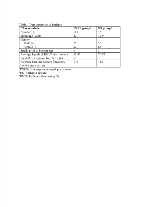Latency to First Event Is Shorter in Psychogenic Nonepileptic Seizures Than in Epileptic Seizures in an Epilepsy Monitoring Unit
Abstract number :
2.003
Submission category :
3. Neurophysiology / 3A. Video EEG Epilepsy-Monitoring
Year :
2018
Submission ID :
499921
Source :
www.aesnet.org
Presentation date :
12/2/2018 4:04:48 PM
Published date :
Nov 5, 2018, 18:00 PM
Authors :
Vishwanath Sagi, University of Louisville; Jaime A. Shoup, University of Louisville; Ravi Kiran Chilukuri, University of Louisville; and Steven M Evans, University of Louisville
Rationale: Psychogenic nonepileptic seizures (PNES) are common imitators of epileptic seizures (ES). One study reported that most patients in Epilepsy Monitoring Unit (EMU) with events just prior to video-EEG were subsequently diagnosed with PNES. This study investigates latency to first event in patients with PNES compared to patients with ES. Methods: We performed a retrospective chart review of patients admitted to the University of Louisville Epilepsy Monitoring Unit from March 2016 to October 2017. We identified patients with PNES and ES. Patients with other nonepileptic events and mixed PNES (epilepsy plus PNES) were excluded. Patient demographics, baseline seizure frequency, length of EMU stay and time from admission to first event were recorded. Results: One hundred eleven PNES patients and 121 ES patients were included (Table-1). The mean age (in years) was 42 and 38 respectively. There were 82 females (73.8%) in the PNES group and 65 (53.7%) in the ES group. The average baseline seizure frequency was four times higher in the PNES group (778 events per year) than ES group (188 events per year). There were three patients each with spells prior to EEG hookup in both the groups, all females in the PNES group. Greater than half (52%) of the PNES patients and one third (38%) of the ES patients had an event within the first 24 hours. The average time to first event was 20.88 hours for PNES group and 30.99 hours for ES group (p Conclusions: PNES is a common discharge diagnosis in patients admitted to EMU. The average time to first event is shorter for PNES than in ES. In patients with high pre-EMU clinical suspicion for PNES, relatively shorter EMU monitoring (24-48 hours) can capture clinical events and confirm diagnosis. This aids in early initiation of appropriate treatment and shorten length of stay. We conclude that this phenomenon may improve cost-effectiveness of EMU monitoring in PNES patients. Funding: None

.tmb-.png?Culture=en&sfvrsn=68bcd009_0)